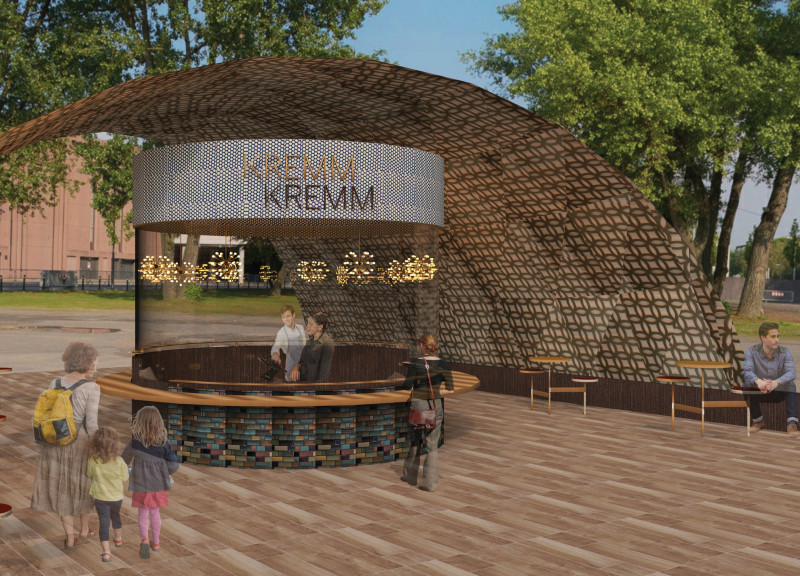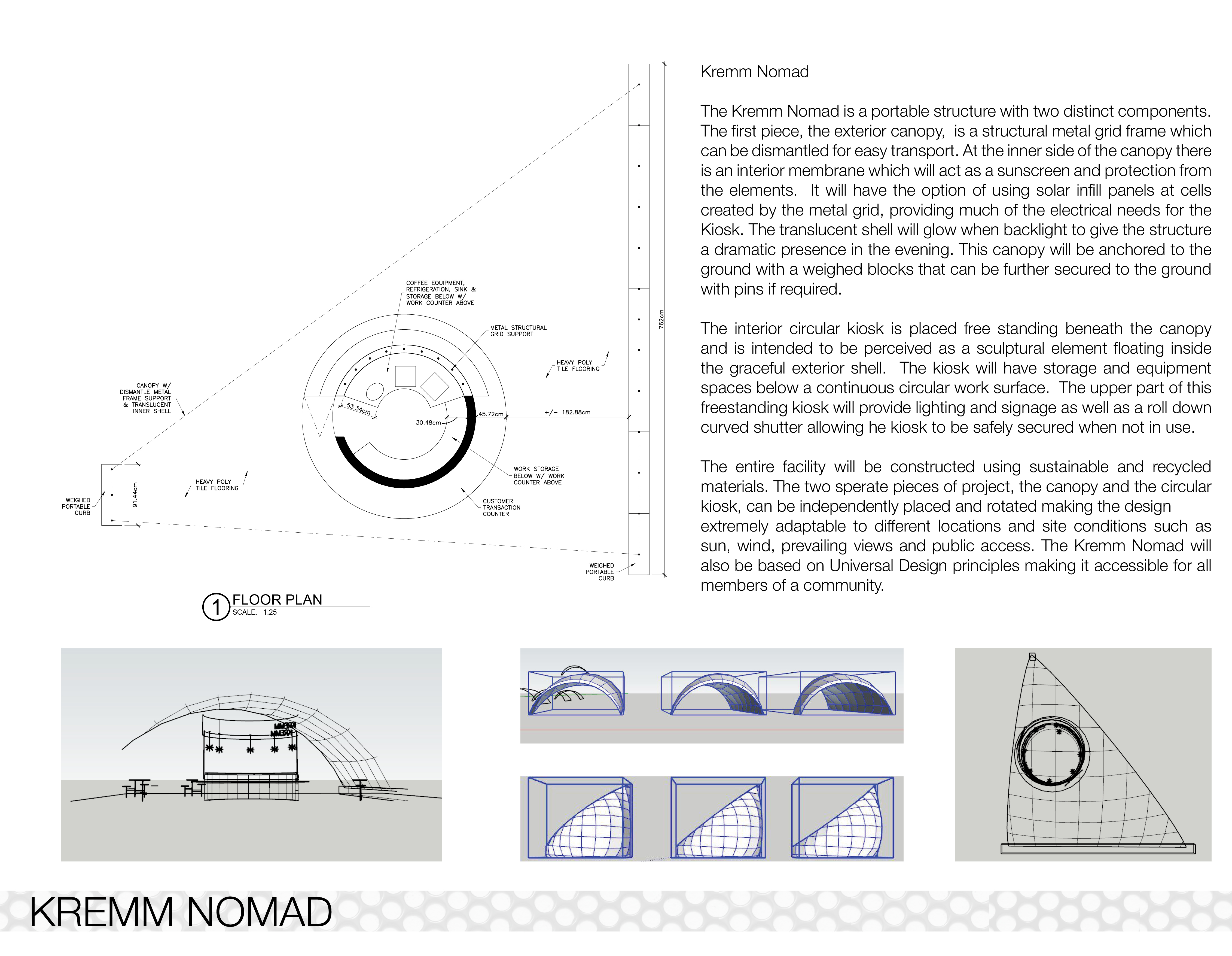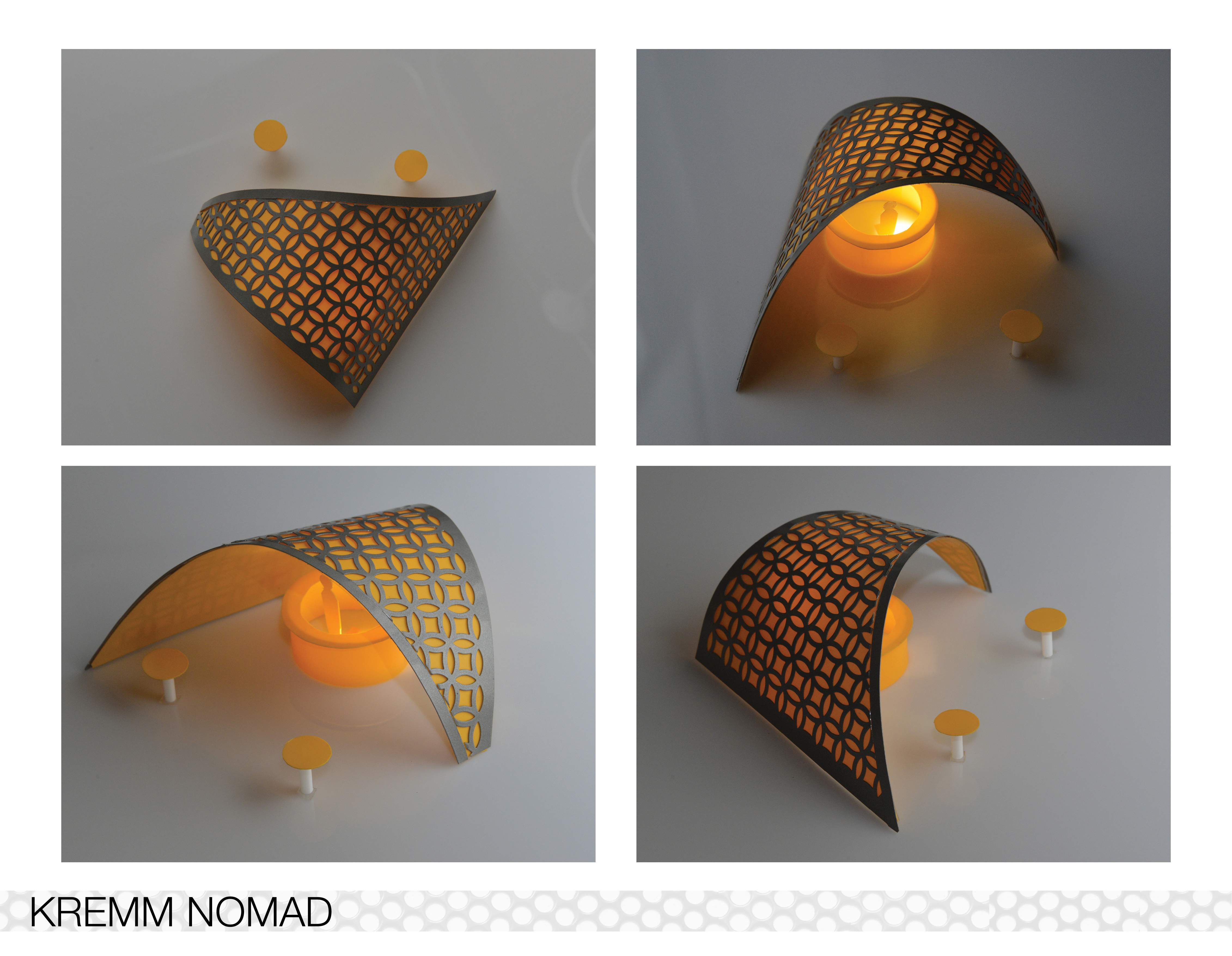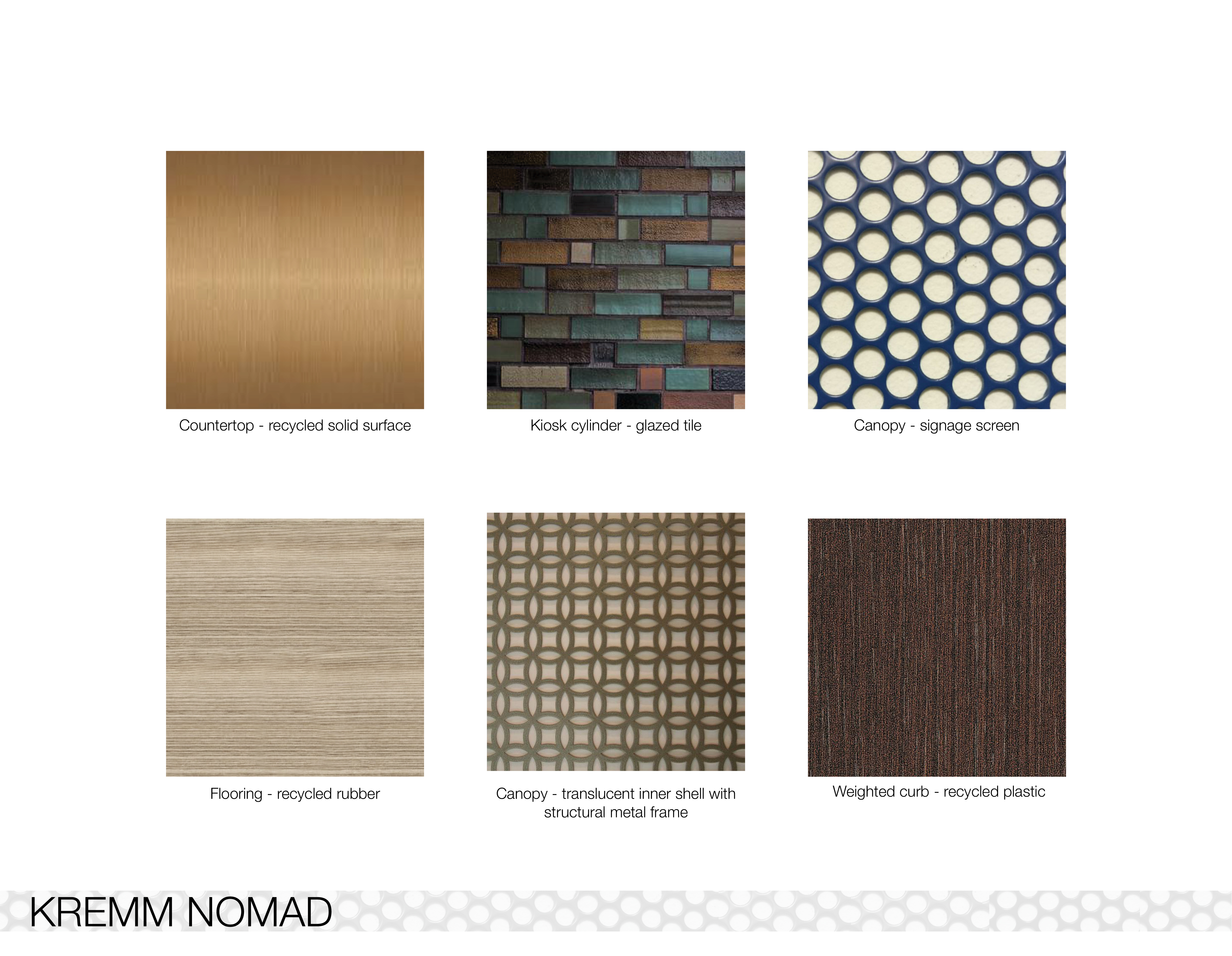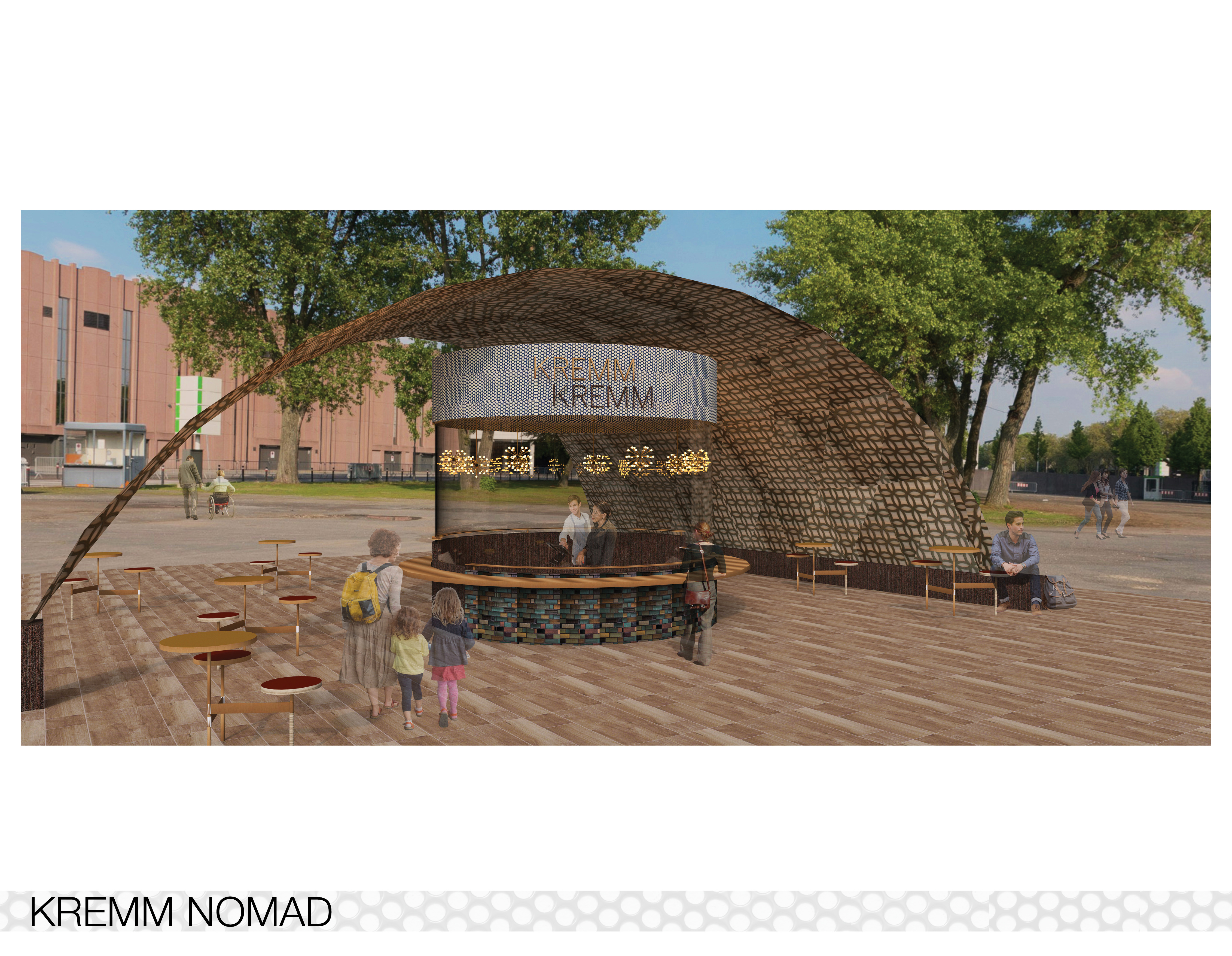5 key facts about this project
The Kremm Nomad is a flexible structure designed for public use. It features a large canopy and a circular kiosk underneath. This design allows it to adapt easily to different outdoor environments, serving as a functional and inviting space for community interaction. The overall concept focuses on sustainability and usability, providing benefits for both users and the environment.
Structural Design and Functionality
The canopy is made from a metal grid frame, which allows it to be taken apart and moved with ease. The inside of the canopy includes a membrane that protects against the sun and weather, ensuring comfort for those under it. This design promotes the idea of enjoying public spaces, regardless of changing weather conditions, by creating areas that feel safe and welcoming.
Sustainability Features
Solar panels can be added to the grid of the canopy. This feature helps meet the electrical needs of the kiosk below. The canopy also has a translucent shell that lights up at night, enhancing visibility and providing a warm atmosphere. This attention to energy efficiency and environmental impact reflects current trends in responsible design.
Kiosk Design and User Interaction
The circular kiosk stands out as both a workspace and an interesting visual element. It includes spaces for equipment and storage under a round work surface. Lighting and signage are built into the upper part, making it easy for people to see and use. When the kiosk is not in operation, a roll-down shutter provides security, protecting the interior while maintaining the exterior’s clean look.
Universal Design Principles
Universal Design principles are central to the Kremm Nomad. The ability to place and rotate the canopy and kiosk independently makes it versatile in various environmental conditions. This adaptability supports access for everyone, including those with different needs, fostering community engagement in all spaces.
The roll-down shutter not only offers security but also adds to the overall design, keeping the kiosk looking polished and functional even when not in use. This attention to detail enhances the user experience and maintains the appeal of the structure.


